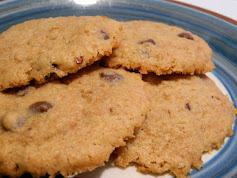Conversations at the plant nursery with Jami Harding
Speaking with Jami, her enthusiasm and knowledge of plants shines through. Currently she is working at Blue Mountain Nursery in Armstrong and has done so for the last seven years. Prior experience is in forestry and silviculture. Her broad experience of plants and trees gives her a unique lens for which to observe the cultivated versus the wild. Jami speaks of the plants as if they were dear friends. She looks at conditions from a plant's perspective when putting them in the yard and uses words more commonly heard when describing people to explain the plants' needs. When we get on the topic of soil and how a plant thrives she grins widely and states that a wild plant is a stronger, better adapted specimen due to the fungal helpers in the forest soil. She suggests putting a few logs on the ground in your garden to attract the microbial and fungal communities that will nurture your soil as they decompose. A well-manicured lawn will never be as rich in life and as healthy as a patch of wild forest.
“The benefits of growing native plants and plants suitable for the climate are that they are better for both fauna and the water-table”, Jami says and cites numerous scientific studies from a broad field to give effect to her words. She uses cautionary words and can see trouble ahead with regards to future water in the Okanagan. When people come to her for advice regarding their gardens she will steer them towards native plants that can handle less water. She points to the hills and says: “Those plants up there will always be more robust and stronger than a nursery plant. They are accustomed to the area. Besides, they will be lower maintenance in your yard once established”.
She describes how a yard can be both productive in terms of food for you and your family as well as be aesthetically pleasing. “Mimic the way the forest grows but prune your bushes and fruit trees to make them accessible for picking”. She sincerely looks at me and states with confidence: “ We [humans] all know what to do to save the planet, we just choose not to! Grow your own food, keep the water clean and be frugal with it, nurture the soil and the insect community; we all know that we need to take care of our land.”
We continue to discuss what is done on a regulatory level from regional and governmental bodies to ensure that new developments or riparian zones (next to waterways) get planted with at least a percentage of local native plants. Jami does not know of any regulations that state that homeowners or developers need to grow even a single, native plant. Home owners and orchards spray pesticides that end up in our waterways, who regulates that? Jami looks up from the plant she is tending, intently locks eyes with me and says: “Let's hope it doesn't take a crisis before we change our ways.”
Let's heed Jami's advice and make our yards and gardens healthy places that will sustain the local fauna. According to studies done by the Provincial Ministry of the Environment, Central Okanagan Regional District and Environment Canada “Okanagan has become home to the largest concentration of rare, endangered and threatened species in BC.... and since 2002 Okanagan River is classified as one of Canada's most endangered rivers.”
Each one of us has the power to remedy this by re-creating local habitat and choosing local plants over exotic ones. We can choose to not use poison/pesticides in our yards and gardens. We can use our water wisely, exchanging all or part of our lawns for drought hardy plants and avoiding washing our car in summer. We can influence others and we can put pressure on our governmental bodies that more is done to protect this bio-diverse and marvellous region. Let's follow Jami's advice and listen to her warnings. Let's not wait until it is too late!




































































